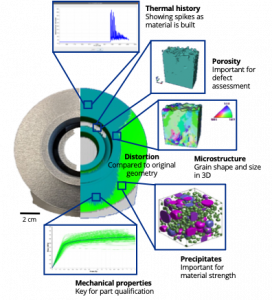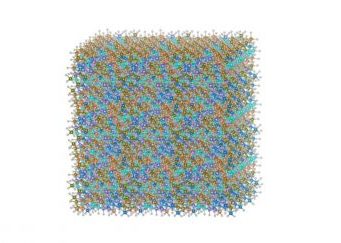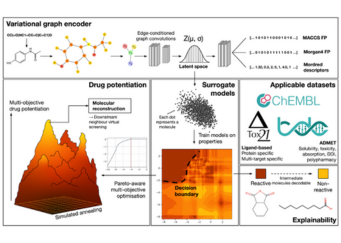Researchers from the Institute of High-Performance Computing (IHPC) are utilizing supercomputers to create a digital twin that furnishes users with comprehensive information about manufactured parts.
In industrial 3D printing, quality inconsistencies in the final printed product still pose a bottleneck issue for the broader industry adoption of this technology. Printing quality is influenced by the choice of alloy composition, printer settings, and part orientation during the build. Trial and error is often necessary before successfully printing the parts, thereby limiting the wider adoption of Additive Manufacturing. In order to overcome these challenges and facilitate the industry in harnessing the benefits of 3D printing, the researchers at IHPC have developed a digital twin of the 3D printing process.
Before the development of the Additive Manufacturing Digital Twin (AM-DT), no software was capable of showing the detailed aspects of a printed component to the user, which includes defects, microstructure, and mechanical properties. Consequently, the industry incurred significant costs in determining optimal process parameters through trial and error with actual test prints.

The Research
The IHPC researchers used the supercomputers at NSCC to develop a digital twin of the 3D printing process. This involved employing advanced physics models that accurately simulate the printing outcome by processing information about the printer type, materials used and printing conditions. The virtual product provides users with full information about the quality of the printed part, encompassing details such as thermal history, microstructure, defects, mechanical properties, residual stress, and part distortion.
The Technology
Digital Twin – Advanced computational modeling and virtual simulations were conducted to minimize the amount of experimental work required to derive a perfect physical product. Massive computational power was required to achieve a very high resolution in the calculation of the 3D-printed parts.
Batch processing – The queuing system facilitated the execution of numerous individual calculations employed for code development, testing, and validation. The researchers executed over a hundred jobs, each demanding 256 CPU cores and approximately 200 GB of scratch disk.
The Impact
The research outcome, AM-DT, has been transformed into robust software that can be directly implemented in an industrial setting by any user. Currently, several companies have already integrated AM-DT into their operations and manufacturing processes.
With AM-DT, companies can digitally design their parts before initiating an actual print, determine the optimal process parameters, and pre-assess the expected mechanical properties. Users can explore workflows fully digitally rather than relying on experimental methods, resulting in significant time and cost savings.
For instance, in collaboration with Hitachi Metals, the research team has developed an integrated simulation platform for Laser Powder Bed Fusion (LPBF). A noteworthy advancement in the platform is its ability to predict the performance of sophisticated metal powders during the printing process.

To find out more about how NSCC’s HPC resources can help you, please contact [email protected].
NSCC NewsBytes January 2024
Other Case Studies
Accelerating electric vehicles research through HPC
Researchers from A*STAR IHPC leverage supercomputing resources to improve the performance of lithium-ion battery technology With the ever-increasing demand in energy storage...
Leveraging machine learning and supercomputers to accelerate new materials development
Researchers from NUS utilise high performance computing resources to accelerate the discovery and development of new materials. The development of novel functional materials has...
Advancing Drug Discovery Research using NSCC HPC resources
Researchers from Nanyang Technological University (NTU) are applying variational graph encoders as an effective generalist algorithm in computer-aided drug design (CADD)....


